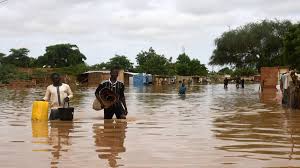 The West African nation of Niger continues to grapple with the devastating effects of torrential rains that have been battering the country since June. The latest tragedy struck the economic hub of Maradi, where at least 15 more lives were lost on Friday, according to regional authorities.
The West African nation of Niger continues to grapple with the devastating effects of torrential rains that have been battering the country since June. The latest tragedy struck the economic hub of Maradi, where at least 15 more lives were lost on Friday, according to regional authorities.
This recent calamity adds to the already staggering death toll of 217 reported across Niger since the onset of the rainy season. The scale of the disaster is immense, with over 350,000 individuals affected by the relentless downpours.
Maradi: A City Underwater
Maradi, the economic powerhouse of Niger, bore the brunt of Friday’s deluge. In a mere 90 minutes, the city was inundated with 150 millimeters of rainfall, triggering widespread chaos and destruction. Governor Issoufou Mamane grimly reported, “We have registered 15 human lives lost, as well as injuries and significant material damage.”
The torrential rains unleashed a torrent of water through Maradi’s streets, causing landslides and structural collapses. The flood’s fury was evident as it swept away vehicles, motorcycles, and trees in its path. Essential services, including drinking water and electricity supplies, have been disrupted in several areas.
Nationwide Impact
The capital city, Niamey, narrowly escaped isolation last week as floodwaters threatened to cut it off from the rest of the country. The main route connecting Maradi to Zinder has also been severely affected, hampering transportation and relief efforts.
A Recurring Nightmare
Niger’s rainy season, typically lasting from June to September, has consistently brought tragedy to the nation. The current year’s toll has already surpassed last year’s figures, which saw 195 deaths and 400,000 people affected.
As Niger continues to battle these extreme weather events, the need for improved infrastructure and disaster preparedness becomes increasingly apparent. The country faces the daunting task of rebuilding while bracing for potential future calamities in a changing climate.

